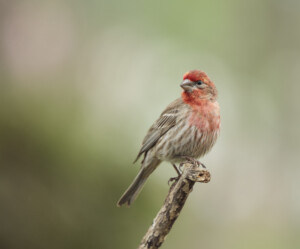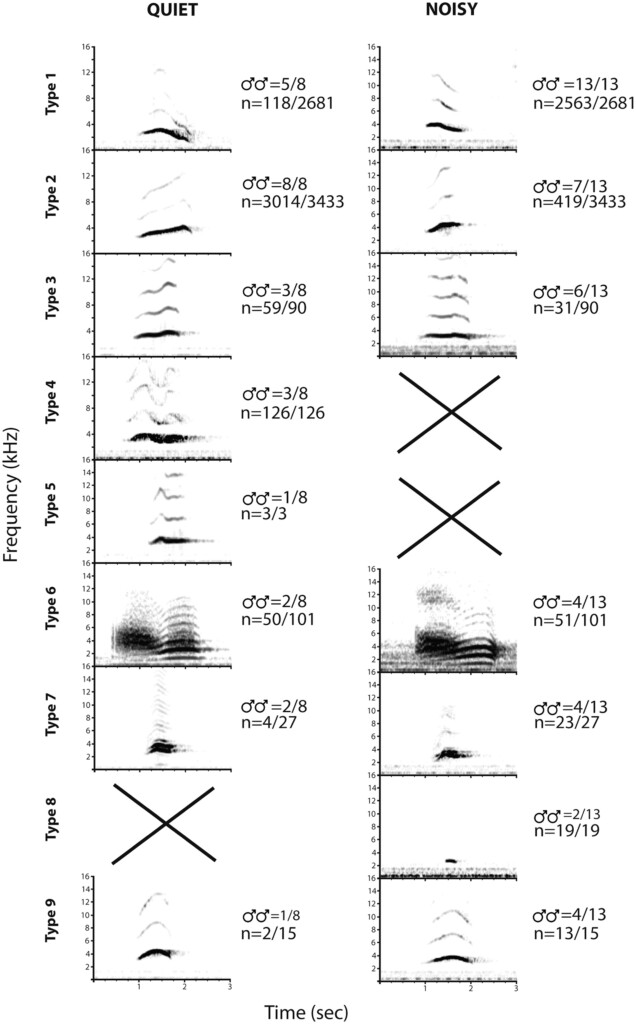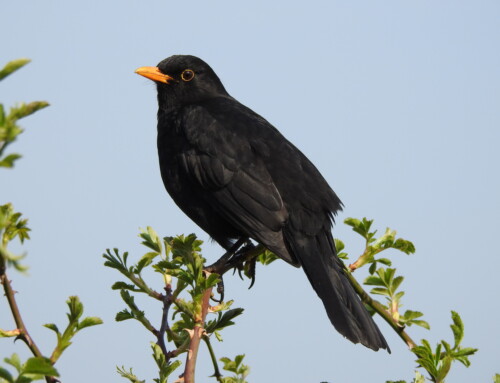
LINKED PAPER
Spectral and temporal call flexibility of House Finches (Haemorhous mexicanus) from urban areas during experimental noise exposure. Bermúdez-Cuamatzin, E., Slabbekoorn, H., & Constantino, M. G. 2023. IBIS. DOI: 10.1111/ibi.13161. VIEW
The majority of threats being faced by bird species today are the result of human activities, including hunting, agricultural intensification, and climate change. Human activities are also known to make habitats noisy, which can have negative impacts on animals and affect species density and diversity. One concern in such noisy areas is the potential interference with acoustic communication. The impact on bird songs in particular has attracted a lot of research interest, with findings of noise-dependent song adjustments reported for various species around the world, but bird calls have not received as much attention despite their recognised roles in survival and reproduction.
In a recent study in Ibis, Eira Bermúdez-Cuamatzin and colleagues experimentally exposed House Finches (Haemorhous mexicanus) from urban areas of different acoustic backgrounds to elevated noise levels to investigate their vocal flexibility.
Experimental noise exposure
Male House Finches in noisier areas have been shown to sing with higher minimum frequencies than those in quieter areas (Bermúdez-Cuamatzin et al. 2009), but noise-dependent variation in the acoustic structure of their calls or in the use of different call types (call repertoire) has not previously been reported. Twenty-one male House Finches were caught in urban areas in Mexico City in low-noise-level and high-noise-level areas, along with five females which were included in the studies as social stimulants. These birds were then tested to investigate: variation in call type repertoire (in terms of frequency or duration) between birds from localities with different noise levels; adjustments in call repertoire use in response to exposure to elevated noise levels; and adjustments in call frequency or duration in response to elevated noise levels.

Figure 1. Call type occurrence and sample size for eight males of quiet origin and 13 males of noisy origin. On each graph the number of males using calls of a particular type and the total number of males recorded (divided by /) are indicated, as are the number of calls generated per call type and the overall number of calls generated (again divided by /). A cross indicates that no recordings of this type were made for any male from this origin..
Evidence of vocal flexibility
A total of nine call types were found across the birds, with six of these (the majority) shared between the low-noise-level and high-noise-level backgrounds. There was also no evidence that House Finches shifted their call repertoire use following experimental exposure to elevated noise levels. This is in contrast to previous findings in other species, e.g. Great Tits (Parus major) (Halfwerk & Slabbekoorn 2009), but the researchers suggest a larger sample of recordings and more studies are needed before strong conclusions can be drawn.
House Finches from quieter backgrounds called with higher frequency and longer duration in comparison to the birds from noisier backgrounds, in contrast with expectations. However, following experimental exposure to elevated noise levels, there was evidence that birds from both acoustic backgrounds increased the frequency of their calls and shortened their duration. Many birds, including House Finches, have been shown to emit higher-pitched songs in noisier territories, thought to reduce masking of songs by anthropogenic noise by reducing spectral overlap (Halfwerk & Slabbekoorn 2009). While there is also evidence of some species emitting calls with higher frequencies in noisier conditions, other studies have suggested a lack of flexibility in call frequency use (e.g. Skiba 2000). For duration, some studies have found songs to be longer during elevated noise levels, while others have found them to be shorter. It is possible that both of these adjustments can have beneficial consequences, with longer sounds being easier to detect against continuous noise and shorter, repeated sounds easier to detect in the quiet windows of fluctuating noise levels (Douglas III & Conner 1999, Brumm & Slabbekoorn 2005).
Overall, the researchers conclude that House Finches are indeed capable of immediate noise-dependent spectral and temporal call adjustments, similar to the flexibility previously found for their songs. While such adjustments may help in masking avoidance, there is also concern that this comes as a compromise of call function. Therefore, as well as a need for further studies into call flexibility across species to enable stronger conclusions, it is important to investigate the impacts of urban noise on fauna and the consequences for animal well-being.
References
Bermúdez-Cuamatzin, E., Ríos-Chelén, A.A., Gil, D. & García, C.M. (2009). Strategies to song adaptation to urban noise in the house finch: pitch plasticity or differential syllable use? Behaviour 146: 1269-1286. VIEW
Brumm, H. & Slabbekoorn, H. (2005). Acoustic communication in noise. Advances in the Study of Behavior 35: 151-209. VIEW
Douglas, H.D. III & Conner, W.E. (1999). Is there a sound reception window in coastal environments? Evidence from shorebird communication systems. Naturwissenschaften 86: 228-230. VIEW
Halfwerk, W. & Slabbekoorn, H. (2009). A behavioural mechanism explaining noise-dependent frequency use in urban birdsong. Animal Behaviour 78: 1301–1307. VIEW
Skiba, R. (2000). Possible ‘rain call’ selection in the chaffinch (Fringilla coelebs) by noise intensity an investigation of a hypothesis. Journal of Ornithology 141: 160–167. VIEW
Image credits
Top right: House Finch (Haemorhous mexicanus) | Public Domain Wikimedia Commons
Blog posts express the views of the individual author(s) and not those of the BOU.
If you want to write about your research in #theBOUblog, then please see here




